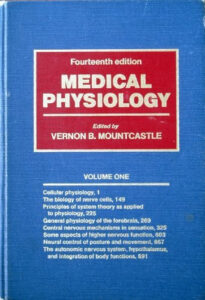History of the Department
 The Department of Physiology began in late 1800 with H.N. Martin, who was one of the five founders of the American Physiological Society. In 1893, William Henry Howell, who discovered thrombin, became the first professor and department chair. Other Directors included Vernon Mountcastle, who won the Lasker award for his work on the brain, and John Littlefield, made a member of the National Academy of Sciences for his work on the HAT medium used for the preparation of monoclonal antibodies. Dr. Littlefield’s publication was a “citation classic” for many years due its high number of citations.
The Department of Physiology began in late 1800 with H.N. Martin, who was one of the five founders of the American Physiological Society. In 1893, William Henry Howell, who discovered thrombin, became the first professor and department chair. Other Directors included Vernon Mountcastle, who won the Lasker award for his work on the brain, and John Littlefield, made a member of the National Academy of Sciences for his work on the HAT medium used for the preparation of monoclonal antibodies. Dr. Littlefield’s publication was a “citation classic” for many years due its high number of citations.
For years, the focus of the Department was on understanding the workings of the brain. Philip Bard was the fourth chair of Physiology between the world wars and then dean during WWII. His topic of interest was understanding where in the autonomic and central nervous system rage and panic are sensed. This emphasis continued with Vernon Mountcastle, who was a leader in discovering and characterizing the columnar organization of the cerebral cortex. With the establishment of the Neuroscience Department, a cadre of neuroscientists moved out of the Department of Physiology and the emphasis of the department shifted toward an understanding of the role of membrane proteins in physiological and pathophysiological processes.
The Department has a long history of outstanding teaching. Philip Bard, at 16-17 years old, obtained Howell’s textbook of physiology. The story is that he had it in his duffle bag during his 6 tours on the Western Front during WWI. When he returned from the war, he finished Princeton and continued his studies at Harvard, and then at 34 became the chair of our Department. During that time, he wrote his own version of Marshall’s textbook, which later became Mountcastle’s textbook of physiology. The physiology textbooks played a large role in the teaching of physiology at the national level. Medical education was very important in our history. The Medical Physiology Course was among the first courses taught at the beginning of the medical school and was taught for well over 100 years. It was rated among the best courses taught throughout the four-year curriculum. It currently continues as a Physiology course taught to graduate students.
